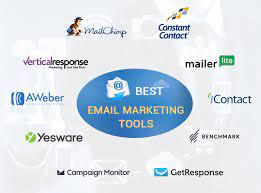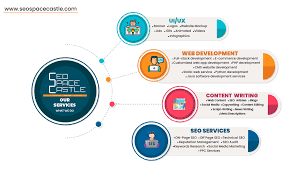Email Marketing Software: A Powerful Tool for Business Growth
In today’s digital world, effective communication with customers is crucial for the success of any business. One of the most powerful tools at a marketer’s disposal is email marketing software. With its ability to reach a wide audience, deliver personalized messages, and track campaign performance, email marketing software has become an indispensable asset for businesses of all sizes.
So, what exactly is email marketing software? Simply put, it is a platform that allows businesses to create, send, and manage email campaigns to their target audience. These platforms offer a range of features and functionalities that streamline the entire process, making it easier than ever to connect with customers and drive engagement.
One of the key advantages of using email marketing software is its ability to segment and personalize campaigns. By categorizing subscribers based on their demographics, preferences, or purchase history, businesses can deliver highly targeted content that resonates with their audience. This level of personalization not only increases open rates but also improves click-through rates and conversions.
Additionally, email marketing software provides valuable insights into campaign performance. Marketers can track metrics such as open rates, click-through rates, bounce rates, and unsubscribe rates in real-time. This data allows them to measure the effectiveness of their campaigns and make data-driven decisions to optimize future ones. With access to detailed analytics reports and A/B testing capabilities, businesses can continually refine their strategies for maximum impact.
Another significant advantage of using email marketing software is automation. These platforms enable marketers to set up automated workflows that trigger emails based on specific actions or events. For example, a welcome series can be automatically sent when someone subscribes to a mailing list or abandoned cart emails can be triggered when a customer leaves items in their online shopping cart without completing the purchase. Automation not only saves time but also ensures timely communication with customers throughout their journey.
Furthermore, email marketing software integrates seamlessly with other tools such as customer relationship management (CRM) systems, e-commerce platforms, and social media channels. This integration allows businesses to synchronize data, streamline workflows, and create cohesive marketing strategies across multiple channels. With a unified approach, businesses can provide a consistent brand experience to their customers, reinforcing brand loyalty and trust.
When choosing an email marketing software, it is essential to consider factors such as ease of use, scalability, deliverability rates, customer support, and pricing. There are numerous options available in the market today with varying features and price points. It’s crucial to select a platform that aligns with your business goals and provides the necessary tools to execute successful email campaigns.
In conclusion, email marketing software is a powerful tool that empowers businesses to connect with their audience in a personalized and efficient way. From segmentation and personalization to automation and analytics, these platforms offer a range of features that help drive engagement and boost conversions. By harnessing the power of email marketing software, businesses can unlock new opportunities for growth and stay ahead in today’s competitive landscape.
7 Frequently Asked Questions About Email Marketing Software in English (UK)
- What is the best email marketing software for beginners?
- Is an example of email marketing software?
- What is email campaign system?
- What is one of the best email marketing tools in 2022 and why?
- What are the 4 types of marketing emails?
- What is the best way to email marketing?
- What is the best email and SMS marketing platform?
What is the best email marketing software for beginners?
When it comes to choosing the best email marketing software for beginners, there are several options that offer user-friendly interfaces, robust features, and affordable pricing plans. Here are three popular choices:
- Mailchimp: Mailchimp is widely recognized as one of the most beginner-friendly email marketing platforms available. It offers a simple drag-and-drop email editor, customizable templates, and pre-built automation workflows. With its free plan, beginners can start building their email list and sending campaigns without any upfront cost. As their needs grow, they can upgrade to paid plans for additional features and advanced functionality.
- Constant Contact: Constant Contact is another excellent option for beginners due to its intuitive interface and helpful resources. It offers an extensive library of professionally designed templates, making it easy to create visually appealing emails without any coding knowledge. Constant Contact also provides robust list management tools, segmentation options, and automation features to help users engage with their audience effectively.
- ConvertKit: ConvertKit is specifically designed for creators and bloggers, making it an ideal choice for beginners in those niches. It offers a straightforward interface that focuses on simplicity and ease of use. ConvertKit’s visual automation builder allows users to create automated sequences effortlessly. Additionally, it provides advanced features like tagging subscribers based on their behavior and interests, helping users deliver highly targeted content.
While these three options are popular among beginners, it’s essential to consider your specific needs and goals when choosing an email marketing software. Take advantage of free trials or demo versions to test the platforms yourself before committing to one. Ultimately, the best choice will depend on your business requirements and personal preferences as you embark on your email marketing journey as a beginner.
Is an example of email marketing software?
Yes, one example of email marketing software is Mailchimp. Mailchimp is a popular and widely used platform that offers a comprehensive suite of tools for creating, sending, and managing email campaigns. It provides a user-friendly interface, customizable templates, and advanced features such as segmentation, automation, and analytics. With its drag-and-drop editor and intuitive workflow builder, Mailchimp makes it easy for businesses to design visually appealing emails and automate their marketing efforts. Additionally, Mailchimp integrates with various third-party applications and offers robust customer support to assist users in achieving their email marketing goals.
What is email campaign system?
An email campaign system is a software or platform that enables businesses to plan, create, execute, and track their email marketing campaigns. It provides a centralized hub where marketers can manage all aspects of their email campaigns, from designing and sending emails to tracking performance metrics and analyzing results.
Email campaign systems typically offer a range of features and functionalities that streamline the entire process of creating and managing email campaigns. These features may include:
- Email Design: The system provides intuitive drag-and-drop editors or customizable templates that allow marketers to create visually appealing and professional-looking emails without coding knowledge.
- List Management: Marketers can manage their subscriber lists, segmenting them based on various criteria such as demographics, preferences, or purchase history. This segmentation enables targeted messaging to specific groups for more personalized communication.
- Automation: Email campaign systems often include automation capabilities that allow marketers to set up triggered emails based on specific actions or events. For example, welcome emails can be automatically sent when someone subscribes to a mailing list or follow-up emails can be triggered after a purchase.
- Scheduling and Delivery: Marketers can schedule email campaigns in advance and set the desired delivery time for maximum impact. The system ensures timely delivery of emails to subscribers’ inboxes while optimizing deliverability rates.
- Tracking and Analytics: Email campaign systems provide comprehensive analytics tools that track key metrics such as open rates, click-through rates, bounce rates, conversions, and more. These insights help marketers measure the effectiveness of their campaigns and make data-driven decisions for future optimizations.
- A/B Testing: Many email campaign systems offer A/B testing capabilities that allow marketers to experiment with different variables like subject lines, content, or call-to-action buttons. By testing different versions of an email on a subset of subscribers, they can determine which version performs better before sending it to the entire list.
- Integration with Other Tools: Email campaign systems often integrate with other marketing tools such as customer relationship management (CRM) systems, e-commerce platforms, and social media channels. This integration enables seamless data synchronization, campaign coordination, and a unified approach to marketing efforts.
Overall, an email campaign system simplifies the process of planning, executing, and analyzing email marketing campaigns. It empowers businesses to engage with their audience effectively, drive conversions, and build long-term relationships through targeted and personalized communication.
What is one of the best email marketing tools in 2022 and why?
One of the best email marketing tools in 2022 is Mailchimp. With its robust features, user-friendly interface, and strong reputation in the industry, Mailchimp continues to be a top choice for businesses of all sizes. Here’s why:
- Ease of Use: Mailchimp offers a user-friendly interface that makes it easy for beginners to get started with email marketing. Its drag-and-drop email builder allows users to create visually appealing and professional-looking campaigns without any coding knowledge.
- Automation: Mailchimp provides powerful automation features that allow businesses to set up automated workflows based on specific triggers or events. From welcome emails and abandoned cart reminders to personalized follow-ups, automation saves time and ensures timely communication with subscribers.
- Segmentation and Personalization: With Mailchimp, businesses can segment their subscriber lists based on various criteria such as demographics, interests, or purchase history. This segmentation capability enables targeted messaging and personalization, resulting in higher engagement and conversion rates.
- Analytics and Reporting: Mailchimp offers comprehensive analytics and reporting features that provide valuable insights into campaign performance. Marketers can track metrics such as open rates, click-through rates, revenue generated, and more. These insights help optimize future campaigns for better results.
- Integration: Mailchimp integrates seamlessly with popular e-commerce platforms, CRMs, social media channels, and other tools commonly used by businesses. This integration allows for data synchronization, streamlined workflows, and the ability to create cohesive marketing strategies across multiple channels.
- Support: Mailchimp provides excellent customer support through various channels including live chat, email support, extensive documentation resources, and a community forum. Their support team is known for being responsive and helpful in resolving any issues or answering questions.
- Scalability: Whether you’re a small business just starting or a large enterprise with complex needs, Mailchimp offers plans that can scale with your business requirements. From free plans for beginners to advanced features and higher subscriber limits for larger businesses, Mailchimp caters to a wide range of needs.
- Deliverability: Mailchimp has a strong reputation for high deliverability rates, ensuring that your emails reach the intended recipients’ inboxes rather than being marked as spam. This is crucial for the success of email marketing campaigns.
While Mailchimp is an excellent choice, it’s important to evaluate your specific business needs and compare different email marketing tools before making a final decision. Each tool has its own strengths and may be better suited for certain industries or business sizes.
What are the 4 types of marketing emails?
There are several types of marketing emails that businesses commonly use to engage with their audience and drive conversions. Here are four common types:
- Promotional Emails: These emails focus on promoting products, services, or special offers to encourage recipients to make a purchase. Promotional emails often include discounts, limited-time offers, or exclusive deals to create a sense of urgency.
- Newsletter Emails: Newsletter emails provide subscribers with regular updates about the company’s latest news, blog posts, industry insights, and relevant content. They help build brand loyalty, establish thought leadership, and keep subscribers informed about new developments.
- Welcome Emails: Welcome emails are sent to new subscribers immediately after they sign up for a mailing list. They serve as an introduction to the brand and set the tone for future communications. Welcome emails often include a warm greeting, a brief overview of what subscribers can expect, and sometimes even a special offer or exclusive content.
- Abandoned Cart Emails: Abandoned cart emails are triggered when a customer adds items to their online shopping cart but leaves without completing the purchase. These emails aim to remind customers about their abandoned items and encourage them to return and complete the transaction. They often include product images, enticing descriptions, and sometimes even offer incentives like discounts or free shipping.
It’s important to note that these are just a few examples of marketing email types, and businesses can employ various other types depending on their specific goals and target audience. The key is to understand your audience’s needs and preferences and tailor your email marketing strategy accordingly for optimal results.
What is the best way to email marketing?
The best way to approach email marketing involves a combination of strategic planning, targeted content creation, and continuous optimization. Here are some key steps to help you maximize the effectiveness of your email marketing campaigns:
- Define Your Goals: Start by clearly defining your objectives for each email campaign. Whether it’s increasing sales, driving website traffic, or building brand awareness, having specific goals will guide your strategy and help measure success.
- Build a Quality Email List: Focus on growing an engaged and opt-in email list of subscribers who are genuinely interested in your products or services. Offer valuable incentives such as exclusive content or discounts to encourage sign-ups and ensure that you comply with relevant data protection regulations.
- Segment Your Audience: Divide your email list into smaller segments based on demographics, interests, purchase history, or engagement levels. This allows you to send targeted and relevant content that resonates with each segment, increasing open rates and conversions.
- Craft Compelling Content: Create well-crafted emails that grab attention from the subject line through to the call-to-action (CTA). Personalize messages whenever possible and provide valuable information or offers that are tailored to the recipient’s needs.
- Optimize for Mobile Devices: With the majority of emails being opened on mobile devices, it’s crucial to ensure that your emails are mobile-friendly and responsive. Use clean layouts, concise copy, and easily clickable buttons for a seamless user experience.
- Test and Refine: Continuously test different elements of your emails such as subject lines, CTAs, layouts, or send times to identify what resonates best with your audience. A/B testing can help determine which variations yield higher open rates or click-through rates.
- Monitor Analytics: Track key metrics such as open rates, click-through rates (CTR), conversion rates, bounce rates, and unsubscribe rates using email marketing software analytics tools. Analyzing these metrics will provide insights into campaign performance and guide future optimizations.
- Maintain Consistency: Be consistent in your email frequency and timing to establish a cadence that your subscribers can expect. However, be mindful not to overload their inboxes with excessive emails, as this may lead to unsubscribes or decreased engagement.
- Personalize Automated Emails: Utilize automation features to send triggered emails based on specific actions or events, such as welcome emails, abandoned cart reminders, or birthday greetings. Personalized automated emails can significantly improve customer engagement and drive conversions.
- Provide Clear Unsubscribe Options: Make it easy for recipients to unsubscribe from your mailing list if they no longer wish to receive your emails. This helps maintain a healthy email list and ensures compliance with regulations like GDPR.
Remember, successful email marketing requires ongoing analysis and adaptation based on the preferences and behaviors of your audience. By continually refining your strategies and staying up-to-date with best practices, you can optimize your email marketing efforts for long-term success.
What is the best email and SMS marketing platform?
Choosing the best email and SMS marketing platform depends on your specific needs and preferences. There are several reputable platforms available in the market, each with its own set of features and strengths. Here are a few popular options to consider:
- Mailchimp: Mailchimp is a widely used platform known for its user-friendly interface and robust features. It offers a range of email marketing tools, including customizable templates, automation workflows, audience segmentation, and detailed analytics. Mailchimp also provides SMS marketing capabilities, allowing you to reach your audience through multiple channels.
- Constant Contact: Constant Contact is another popular choice for email and SMS marketing. It offers an intuitive interface, drag-and-drop email builder, automation features, contact management tools, and real-time reporting. Constant Contact also provides SMS marketing functionality to help you engage with your audience through text messages.
- SendinBlue: SendinBlue is a comprehensive marketing platform that offers both email and SMS marketing solutions. It provides easy-to-use campaign builders, advanced segmentation options, automation workflows, transactional emails, and powerful analytics. SendinBlue also has a user-friendly SMS feature that allows you to send personalized text messages to your subscribers.
- ActiveCampaign: ActiveCampaign is known for its advanced automation capabilities and robust CRM features. It offers a visual automation builder, personalized content recommendations, dynamic segmentation options, split testing, and in-depth reporting. While ActiveCampaign primarily focuses on email marketing automation, it also integrates with third-party SMS providers for sending text messages.
- HubSpot: HubSpot is a comprehensive inbound marketing platform that covers various aspects of digital marketing including email and SMS campaigns. It offers an all-in-one solution with features like contact management, lead nurturing workflows, personalized content creation tools, detailed analytics dashboards, and CRM integration.
It’s important to evaluate these platforms based on your specific requirements such as budget constraints, scalability needs, ease of use, integration capabilities with other tools, and customer support. Consider testing out free trials or demos to get a feel for each platform and see which one aligns best with your business goals and marketing strategy.




